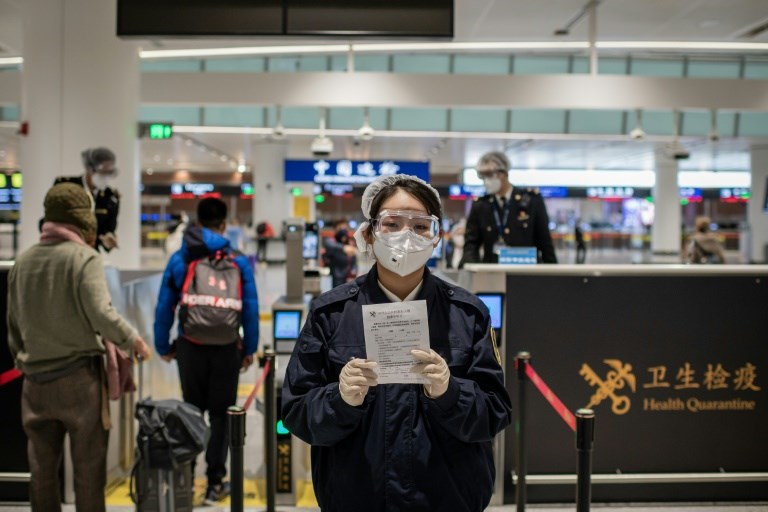Our stories help us make sense of the world.
But all stories are tidy simplifications of reality.
With the endless editorials on social media, public opinion moves further from the truth. Throwing in fear and prejudice, what we believe to be true becomes inaccurate, biased and sometimes racist.
This is the case with Coronavirus Phobia that could also be called Facemask Mania. There has been a racist backlash against ethnic Chinese around the world, including Australia, France and the UK. In our own country, Prime Minister Justin Trudeau had to remind us that “there is no place for discrimination driven by fear.”
Unfounded racism, scapegoating and victim-blaming has been seen with other outbreaks including the 2014 West African Ebola outbreak in 2014 and 2003 SARS outbreak.
The WHO Director General, Dr. Tedros Adhanom Ghbebreyesus provides daily updates on COVID-19. On February 17th, he reported that it causes only mild disease in 80% of those infected; pneumonia in 14%; and critical disease such as respiratory failure and septic shock in 5%. The risk increases with age and there have been relatively few cases in children.
The COVID-19 virus appears not to be as deadly as SARS and MERS were.
Though the virus was first identified in Hubei province, the racism towards Canadians of Chinese ancestry and the bullying of children in our schools is unjustified.
Have you questioned the stories you believe?
As of February 17th, there have been 70,635 cases in China (94% in Hubei province) with 1,772 deaths. Outside of China, there have in a total of 694 cases in 25 countries with only three deaths.
Though the virus was first identified in Hubei province, the racism towards Canadians of Chinese ancestry and the bullying of children in our schools is unjustified.
Have you questioned the stories you believe?
In my work as a family physician, I listen to each patient’s story. In the jargon of the trade, we call it the history of the presenting illness: what problem is troubling them, when did it start and how does it affect them.
It is crucial to give patients the time to tell their stories, which they may have been rehearsing on the way to the clinic and in the reception room. By interrupting too soon with our doctor’s questions (i.e. What kind of pain is it? Is it burning, crampy, achy or sharp? What makes it better? What makes it worse?), we may disrupt the coherence of these stories and miss crucial information.
Each of us carries within us a more significant story. This is the story under construction by which we make sense of our lives. Many are unaware that they have such stories. They assume that they see reality just as it is.
These stories are revealed to family physicians as they develop therapeutic relationships with their patients over many visits. When I ask patients to tell me about their childhood, they will present a coherent narrative that encapsulates a variety of events, experiences and relationships.
Most do not realize that they’ve subconsciously constructed a simplified story that may differ markedly from those of other family members. For good or ill, we tend to typecast siblings and parents. Later in life, we will do the same with our spouses and our own children.
Our stories can be adaptive in that they help us to make sense and function in life. They can make us resilient if they allow us to see the positive in what were initially difficult circumstances. They are truly adaptive if they evolve over time.
When we are young children, our parents know everything. When we are teens, they know nothing. When we are young adults, they have acquired a wealth of practical knowledge, and when we ourselves become parents, we appreciate them as they are and the parents that they were.
On the other hand, our stories are maladaptive if they perpetuate caricatures of real human beings. They can constrain our perceptions of others such that we see only what we have seen before. We cannot see growth in others and do not allow growth in our relationships.
Families can get stuck in obsolete ways of relating; each member is arrested in a childhood role. They slip into the same arguments, and nothing is ever resolved.
Every time I turn on my computer, I am alerted to the latest updates to my current programs. Even though they manage to complicate our lives, we are actually more complex and multidimensional than our computers.
Why don’t we see one another that way? The next time you talk to a friend, coworker, sibling, parent or child, really look and listen. Be alert to the latest updates and upgrades. See how they’ve grown and changed, and let your relationships evolve as well.
As part of the Burnaby Division of Family Practice’s Empowering Patients public health education program, I’ll be presenting a practical talk on the Patient-Doctor Relationship: Getting the Care You Need at 7 pm on February 24th, 2020 at the Bob Prittie Library in Metrotown. For more information, contact Leona at [email protected] or (604) 259 4450.
On Saturday, February 22nd, I’ll be sharing stories during my keynote talk at Century House’s Inspiration Day in New Westminster. For more information, call (604) 519 1066.
Dr. Davidicus Wong is a family physician. For more on achieving your positive potential for health, read his blog at davidicuswong.wordpress.com.



